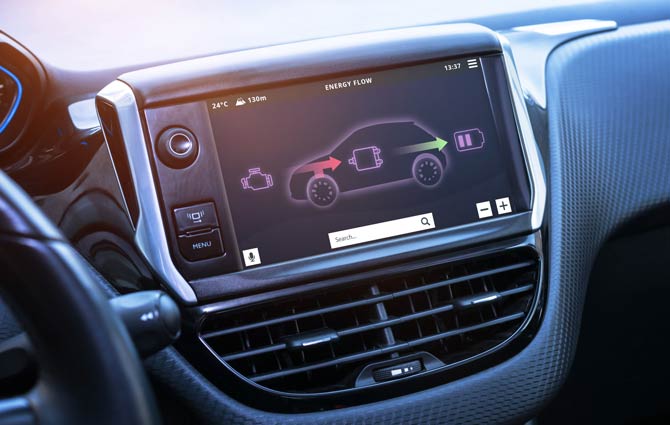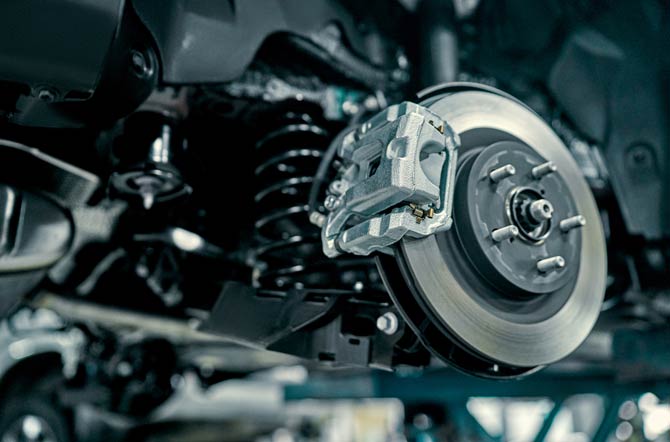
Every vehicle on the road needs two basic things: something to start and something to stop. For over a century, the internal combustion engine of gasoline-powered cars has filled the first need while wasteful friction brakes have filled the second. One of the distinguishing features of electric vehicles is that they can hit both targets with one shot: the same electric motor that powers an electric car can double as a generator to slow the vehicle down while storing additional electricity.
This one process is also known as regenerative braking.
What is regenerative braking?
Regenerative braking is a descriptive term that means exactly what it says. When regenerative braking is activated, the vehicle brakes while simultaneously regenerating some of the power originally used to accelerate.
This current is fed back into the batteries, where it is available in the future to accelerate the vehicle.
This differs from traditional brakes, which only generate heat and noise when a vehicle slows down. Unlike internal combustion engine vehicles, which use only conventional braking, electric vehicles use both traditional and regenerative braking.

How does this type of braking work?
When you use regenerative braking in an electric vehicle, the electric motor, which is normally responsible for accelerating the vehicle, switches over to work as a generator. This does not take the power from the batteries to turn the wheels and accelerate the vehicle.
The generator now uses the vehicle’s propulsion and the continued rotation of the wheels to generate electricity, which can then be stored in the batteries. In addition to charging the batteries, this process also slows down the vehicle.
Unlike conventional braking, which only activates when you step on the brake pedal, regenerative braking often kicks in the moment you take your foot off the accelerator. This process is more pronounced on some vehicles than others. Every electric vehicle is a little bit different in how it uses its braking systems.

Why electric vehicles use regenerative braking
The main purpose of regenerative braking technology is to increase efficiency and range. Without regenerative braking, an electric vehicle is limited by the amount of charge that can be stored in the car’s battery once you unplug it and start driving.
With regenerative braking, the vehicle can continue to generate additional power in excess of the amount stored in the battery. This is because some of the battery power used to accelerate the vehicle is picked up and stored when the vehicle slows down or stops.
This power can then be used later to accelerate the vehicle again. All these actions ensure an extended range of the electric car, even if it’s just a little here or there.
In addition to increasing the efficiency and range of an electric vehicle, regenerative braking has another positive by-product: fewer pollutants.
Although electric vehicles are equipped with conventional brakes, they are used far less than in a comparable conventional vehicle. As a result, they need to be serviced less often and produce significantly less brake dust. Brake dust contributes to air pollution and can cause respiratory complications if inhaled.
Why electric cars still use traditional brakes
While EVs are designed to use regenerative braking in a variety of situations, even in stop-and-go traffic, every EV is also equipped with a traditional braking system. This second braking system provides additional braking power in an emergency and also takes over in certain other situations. For example, when an electric vehicle is stationary (parked) and has to stop.
The traditional brake system hardly wears out with this use and there is no brake dust.
The stopping power of conventional brakes can also be added to the stopping power of regenerative brakes when rapid braking is required. This type of use will cause some wear, but not as much as you would see on an IC engine driven vehicle driven under similar circumstances.
Is regenerative braking really useful?
Regenerative braking is always useful as it performs a necessary job, but it is more efficient in some situations than others.
While regenerative braking can increase a vehicle’s range, the overall increase in efficiency always depends on a few factors.
These include driving conditions, how aggressive the driver is when accelerating and braking, and even the size and weight of the vehicle.
Regenerative braking is typically said to be around 60 to 70 percent efficient when slowing a vehicle, generating electricity and storing it in the batteries. However, this does not mean a 60 to 70 percent increase in range, because regenerative braking only charges the batteries when the system is actually in use.
Source: https://www.blog.de/regeneratives-bremsen/


